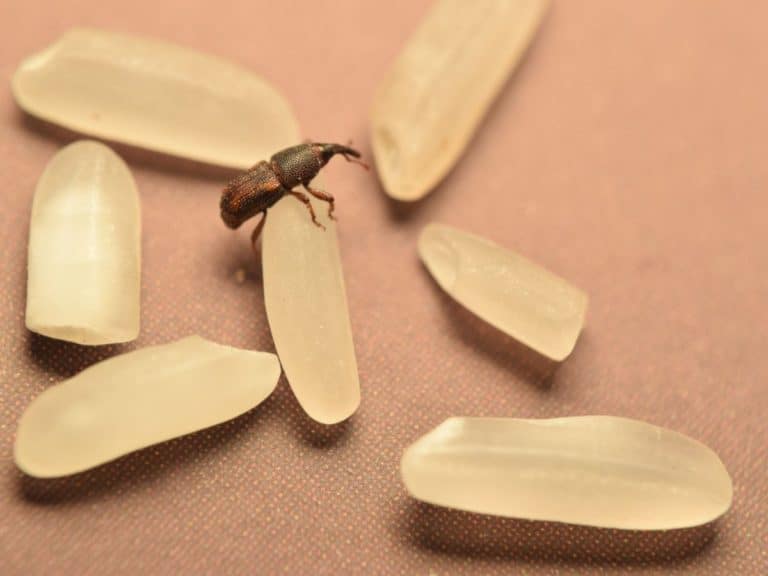How to Fix Watery Pizza (Frozen and Homemade)
Few foods can beat fresh hot pizza, but few foods can also kill a mood than a watery pizza. Don’t fret though, because there’s a way to fix watery pizza.
Pizza gets watery because of excess water. The quickest way to fix that is to place something to absorb the excess liquids, like a paper towel. Just gently dab away those excess water. You can also dry it out. Set your oven at the highest temperature, and place the pizza for about a minute or so.
There are many reasons for pizza to get watery. What you do to fix it can depend on the reason. You might have tried to make pizza, but it ended up being watery. Or you microwaved frozen pizza, and it came out dripping. Whatever your watery situation might be, you might have the same questions as below

Why Your Frozen Pizza Gets Watery
A reason why your frozen pizza ends up being watery is you thaw it. Yes, you can thaw your pizza. Doing so can help speed up the cooking process, but you should only thaw it for a bit. Don’t let all the ice completely melt. If you do, the texture will be soggy and the appearance will be wrinkly. All the water will come out and the pizza is unlikely to reabsorb it.
With all the water out. You have two options.
One is to bump up the cooking temperature or cooking time. That should give enough heat or time to evaporate all the released water. But if you do, you risk burning your pizza.
The other option is to dab all the water with a paper towel.
Pre-heat Your Oven
Just as you pre-heat your oven when you bake, as you should also pre-heat it when heating frozen pizza. Set the temperature to as high as it can go.
Those frozen pizzas may have been made in ovens that went as high as 500 °F (260 °C). If they were made in a stone oven, they may have reached 700 °F (370 °C) or higher.
Heating your frozen pizza that high lets the crust gets crispy before the toppings burn. Doing this also fixes soggy pizza crust. This is a delicate step though, so be aware of your pizza. If done correctly, it will be perfectly cooked.
What To Do During Pre-Heating
Instead of just having your pizza as it, you level it up. While your oven is pre-heating, you can add more toppings. You can also drizzle more olive oil.
Related Article: How to Store Pizza [Freeze, Thaw, Seal, etc]
Why Your Homemade Pizza Is Watery
Fixing a watery homemade pizza is trickier than fixing a watering frozen pizza. If you made your pizza from scratch, there are many reasons why the end result is watery.
Your Cheese
Mozzarella is among the top cheeses used on pizza. To make your homemade pizza fresher, you may be inclined to use fresh mozzarella. Fresh ingredients are usually better. Unfortunately, fresh mozzarella might be the reason your homemade pizza is watery.
This cheese holds a lot of water. At least half of its weight is water. When you bake the pizza, all that water will come out. If much of the water doesn’t evaporate in the oven, you’ll end up with watery homemade pizza. Fortunately, there are ways to fix this issue.
Dry It First
Since mozzarella is mostly water, you benefit by letting some of the water dry out first. Instead of slicing the mozzarella and immediately adding it, set it aside first. Put the slices on a paper towel that will absorb the water. About 15 minutes should be enough. Once the cheese seems dry enough, then add it to your pizza.
Slice Thinly
The thinner the slice, the easier it is for the water to evaporate from the cheese. Keep in mind though that the thinner slices also cook faster. So look after your pizza as it bakes.
Add It Near The End
It doesn’t take much to melt fresh mozzarella. Once the cheese has melted, it will release its water content, risking a soggy pizza end result. To work around this, add cheese as the last ingredient. So add all your toppings except the cheese. Pop it in the oven and let it bake.
Once the pizza is almost cooked, take it out, add the cheese, and put it back in to finish. How long you bake the cheese will depend on many things. These things include the inherent water content, the amount you put, and the thickness. You may need some trial and error for this technique.
Add the least amount of cheese as you like and place it back in the oven. Check on it every few minutes, say 2 to 5. If the pizza can still handle more baking time and more cheese, add a bit more cheese. Adjust as needed. You will eventually figure it out with practice.
Combine Different Cheeses
You can also consider combining fresh cheese with processed cheese with low moisture. Processed cheese by itself does not look as appealing as fresh ones. You can find the right balance when using both fresh and processed cheese. That way, you can have homemade pizza that looks good and isn’t soggy.
Why Your Pizza Crust Is Soggy
Part of the appealing appearance of any freshly cooked food is the steam coming off it. However, that steam can also bring the downfall of crispy food, like your pizza crust. Steam doesn’t come out of the top of your pizza. It also comes out from the bottom.
If you use a typical baking dish or pan, the steam that wants to come out from the bottom has nowhere to go. It gets stuck there and it eventually condensates. The liquid builds up at the bottom and gets reabsorbed by the crust, making it less crispy or even soggy.
To prevent this, invest in a pizza stone or a perforated pan. A pizza stone is porous, so the pores will absorb the steam and condensates. Meanwhile, the holes on a perforated pan will let the steam escape.
Related Questions
How should I microwave my pizza so it isn’t soggy?
Microwaving old pizza usually has a soggy result. To work around this, microwave your pizza on a paper towel. The paper towel will absorb the steam at the pizza’s bottom just as a pizza stone will.
How can I fix my watery pizza dough?
The dough is usually sticky because there’s too much water. Add more flour to counteract this, but do it slowly. Knead the dough as you add a bit of flour. Repeat until the dough is no longer sticky.





![How to Store Raw Chicken [According to Science]](https://foodwine.com/wp-content/uploads/raw-chicken-1010586004-768x576.jpg)